As a certified art therapist, you have the unique opportunity to combine your love of art with your desire to help others. An art therapist uses art to help patients work through various challenges and issues they may be facing. This is a gratifying career but requires specialized training and education. Art therapists must possess the ability to understand people at different levels, be able to create opportunities for them to improve themselves, and understand how their methods will impact them in the future. The job of an art therapist involves helping patients explore their emotions and experiences through visual expression, collaboration on projects that encourage them to explore new ideas, and more. This article will help you understand what skills are required for this position, what type of employer would most likely hire you as an art therapist, what kind of certification or license you need, and what sort of resume examples will best showcase your abilities and demonstrate why you’re the right person for this role.
Art Therapist Resume Example
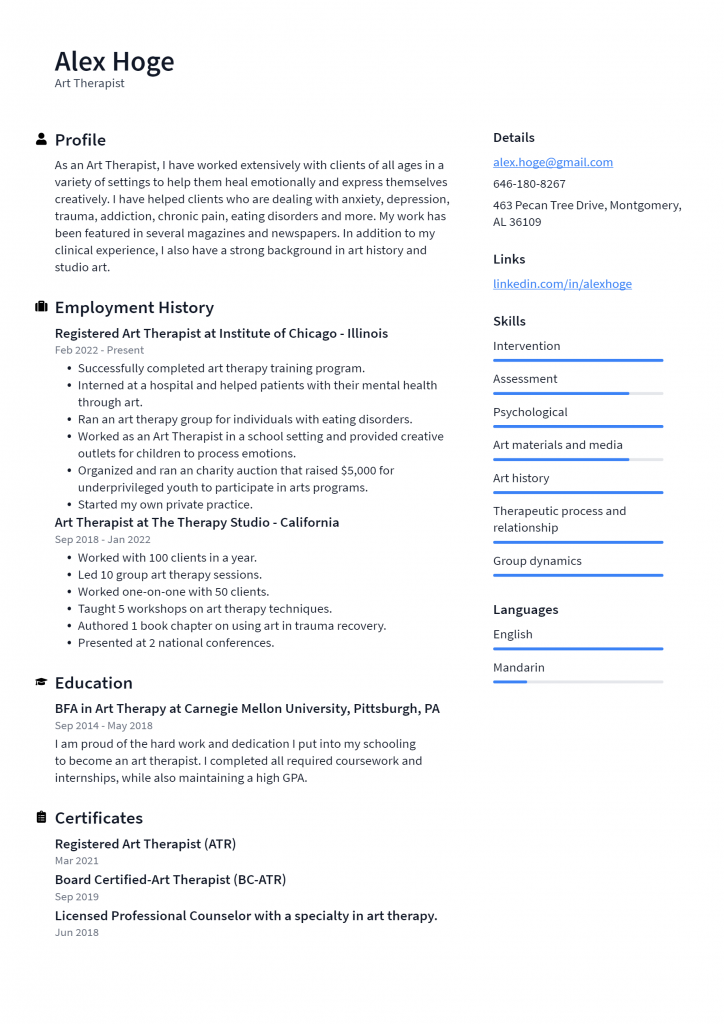
Download This Art Therapist Resume as PDF
Painter Resume Example
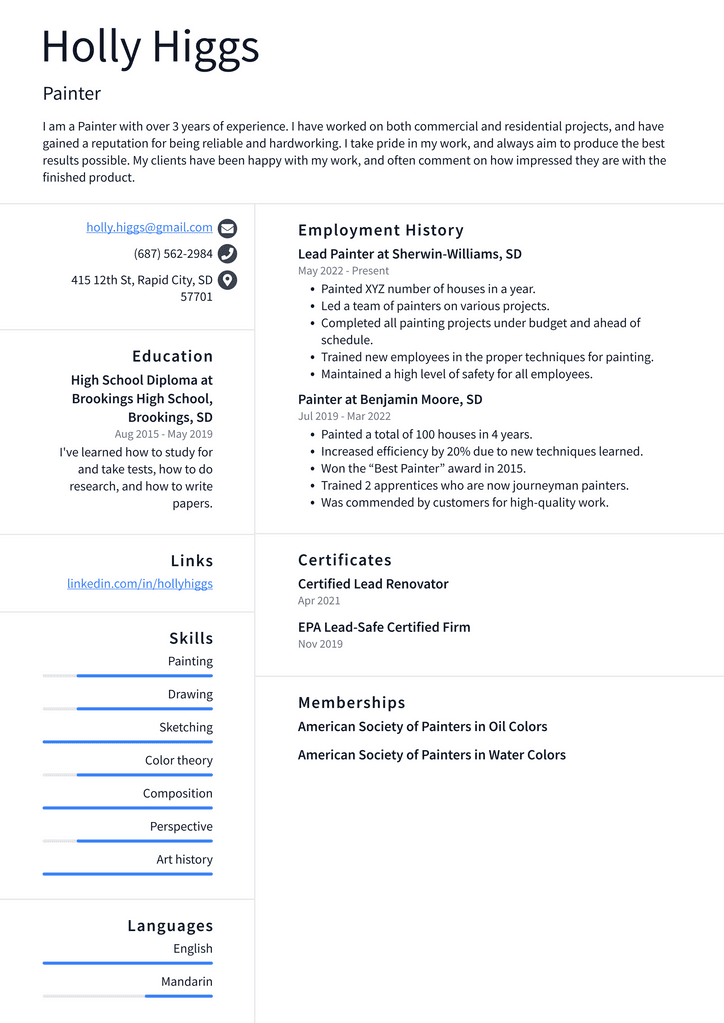
Download This Painter Resume as PDF
Multimedia Artist Resume Example
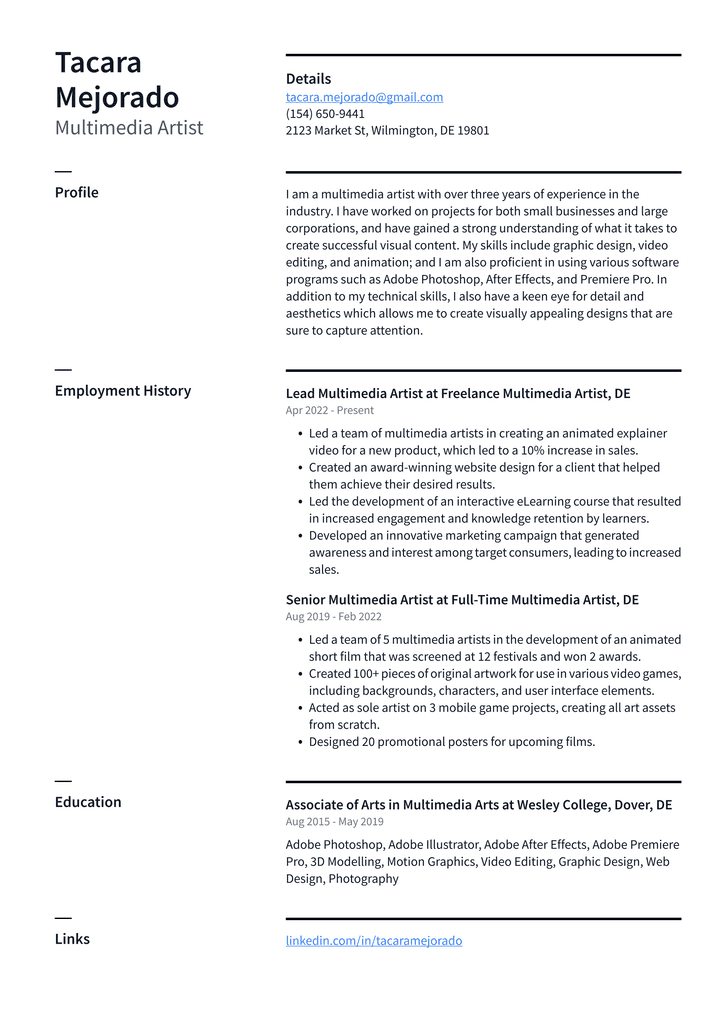
Download This Multimedia Artist Resume as PDF
Graphic Designer Resume Example
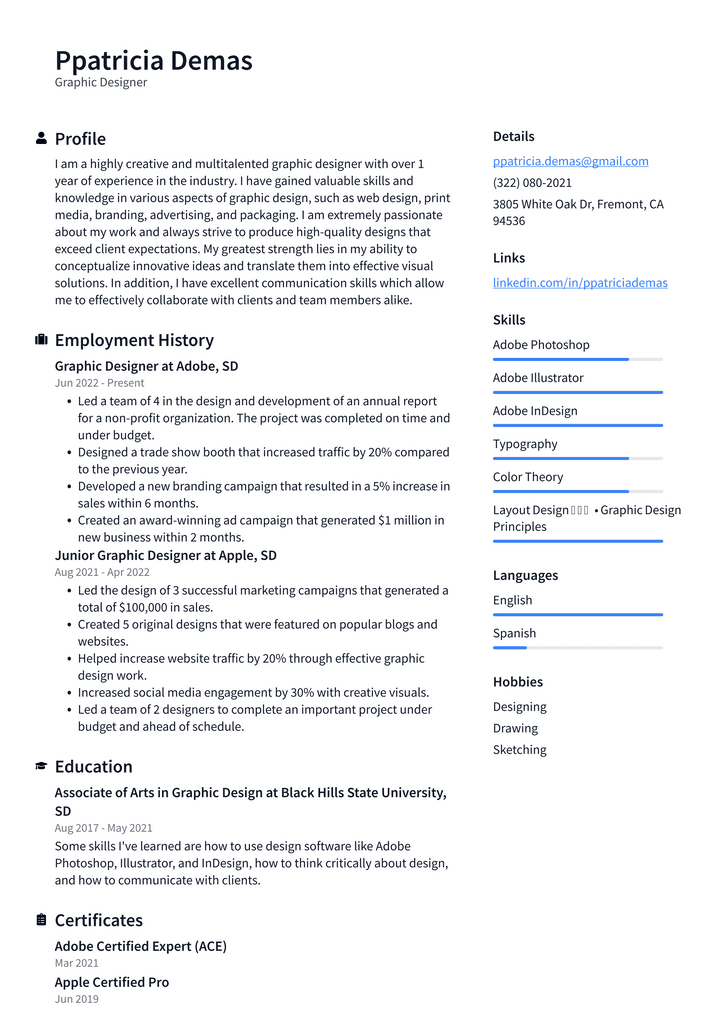
Download This Graphic Designer Resume as PDF
Art Director Resume Example

Download This Art Director Resume as PDF
Photographer Resume Example

Download This Photographer Resume as PDF
Sculptor Resume Example
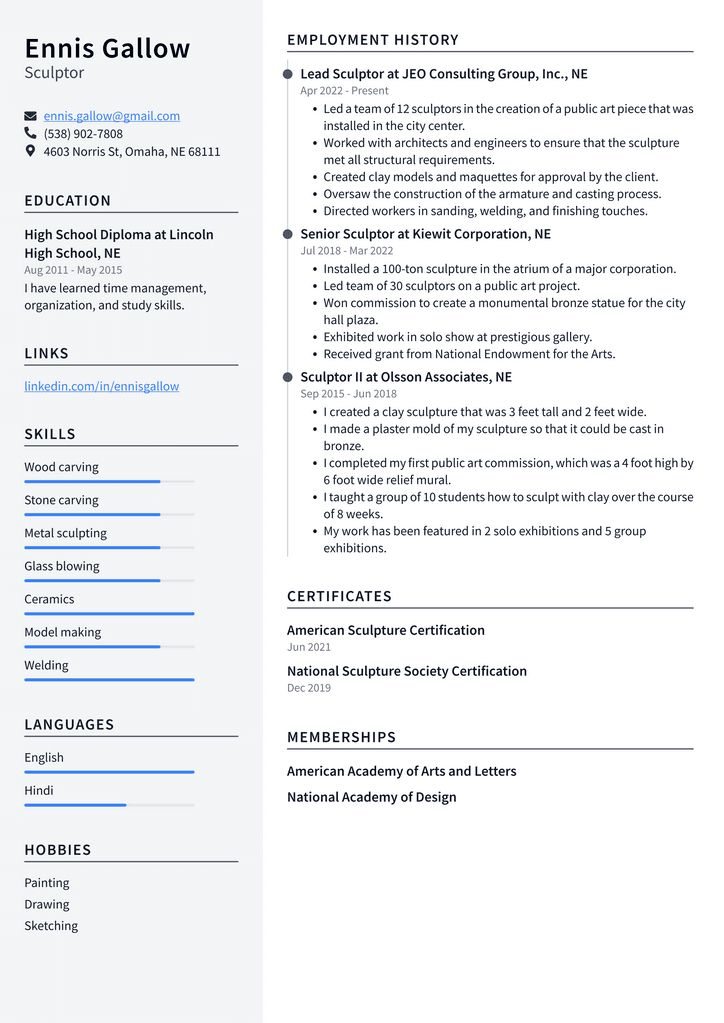
Download This Sculptor Resume as PDF
What skills do you need to become an art therapist?
Visual and Spatial – The ability to see things differently is paramount to an art therapist. Because you’re able to see the world through the lens of your clients, you must possess the ability to understand the visual expression, be able to identify creative impulses and have the ability to see connections between what a person is saying and how they’re saying it. You must be able to analyze all information you’re given and then use it to help others understand what they’ve expressed and how it impacts them. Artistic Ability – While you don’t necessarily have to be an expert artist, you must know how to use art to help others. You’re likely to utilize various art-making methods, like painting, sculpture, collaging, and more. You must be able to engage with your clients in a way that feels natural to them to help them communicate through the art form they are most comfortable with. Art Therapy Theory – You must be familiar with the core concepts and techniques found in the field of art therapy and be able to apply them in various therapeutic settings. You must understand how art is used to address a wide range of mental health issues and know how to direct your patients to help them realize their full potential.
Why is becoming an art therapist a good idea?
As an art therapist, you’ll be helping people communicate through their creative process. You can help them discover their feelings and innermost thoughts through the visual arts, which can be a very therapeutic process. You can help all types of patients, from children to adults, who struggle with mental health issues and find it hard to communicate their feelings. You can help them explore and understand their emotions, process difficult experiences, and find ways to work through their mental health issues. Art therapy is a widely accepted and growing field, and there are currently more job opportunities in the area than ever before.
Art Therapist Job Description
The job of an art therapist involves helping patients explore their emotions and experiences through visual expression, collaboration on projects that encourage them to explore new ideas, and more. You’ll be working with individuals, groups, and families in various therapeutic settings, and you can expect to travel to visit patients who don’t have easy access to art therapy facilities. When working with patients, you’ll help them explore their emotions and experiences through visual expression, collaborate on projects encouraging them to explore new ideas, and more. In addition, you may collaborate with other treatment team members to help patients address their core issues and use creative self-expression to enhance their treatment experience. You may also be responsible for supervising interns and other members of the treatment team.
How to become an art therapist?
First, before you consider becoming an art therapist, you must understand that this is a particular career path. You can’t just become an art therapist; you must become a certified art therapist. To become a certified art therapist, you must complete a graduate program in art therapy and receive a master’s degree. You must then pass the American Art Therapy Association’s Certification Examination for Art Therapy, which will give you the credentials to practice as an art therapist. While in graduate school, you should maintain an active presence in the field by participating in fieldwork and attending art therapy conferences. Once you’ve graduated, you should begin networking with various area members, including supervisors and employers, to get your name out there.
Conclusion
Art therapists must possess the ability to understand people at different levels, be able to create opportunities for them to improve themselves, and understand how their methods will impact them in the future. The job of an art therapist involves helping patients explore their emotions and experiences through visual expression, collaboration on projects that encourage them to explore new ideas, and more.